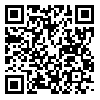BibTeX | RIS | EndNote | Medlars | ProCite | Reference Manager | RefWorks
Send citation to:
URL: http://hnmj.gums.ac.ir/article-1-2072-en.html


 , Abdolhosein Emami Sigaroudi *
, Abdolhosein Emami Sigaroudi * 

 2, Moluk Pouralizadeh3
2, Moluk Pouralizadeh3 

 , Saman Maroufizadeh4
, Saman Maroufizadeh4 


2- Associate Professor, Cardiovascular Diseases Research Center, School of Nursing and Midwifery, Guilan University of Medical Sciences, Rasht, Iran. , Emamisig@gmail.com
3- Assistant Professor, Department of Nursing, School of Nursing and Midwifery, Guilan University of Medical Sciences, Rasht, Iran.
4- Assistant Professor, Department of Biostatistics and Epidemiology, School of Health, Guilan University of Medical Sciences, Rasht, Iran
Introduction: Social competence can help adolescents achieve effective social interactions and establish and maintain successful relationships with peers and society.
Objective: The purpose of this study was to determine the status of social competence and its related factors in high school students in Rasht City, Iran.
Materials and Methods: In the cross-sectional analytical study, 491 high school students in Rasht were selected by multi-stage random cluster sampling. The study tool was a two-part questionnaire: the demographic characteristics of the participants and the social competence questionnaire. Descriptive statistics, 1-way analysis of variance (ANOVA), the Pearson correlation coefficient, independent t test, and multiple linear regression were used for statistical analysis.
Results: Of 491 students, 65.4% were female, 63.1% were the first child of the family, and 94.3% had normal sleep amount. Also, 94.1% of students lived with their parents. Their mean social competence was at the desired level (261.7±8.31, total score: 47-329). There was a significant relationship between school grade point average (r=0.271, P=0.001), duration of Internet use (r=-0.103, P=0.022), and students’ sleep amount with social competence based on 1-way ANOVA test (P=0.005). Based on multiple linear regression analysis, a high-grade point average was associated with increased social competence (B=7.54, 95% CI; 5.43 to 9.78, P=0.001) and female gender (B=-6.71, 95% CI; -13.15 to -0.26, P=0.04), being the second child compared to the first (B=-8.19, 95% CI; -14.48 to -1.90, P=0.011), insomnia (B=-19.07, 95% CI; -36.14 to -2.01, P=0.029) and parental divorce and living with father (B=-46.47, 95% CI; -81.95 to -10.99, P=0.01) were associated with low social competence (R2=0.16).
Conclusion: These results can help managers plan educational and training organizations and promote parents’ awareness to eliminate everyday barriers and develop social competence in adolescents.
Received: 2023/01/25 | Accepted: 2023/01/30 | Published: 2023/01/30
| Rights and permissions | |
 | This work is licensed under a Creative Commons Attribution-NonCommercial 4.0 International License. |



